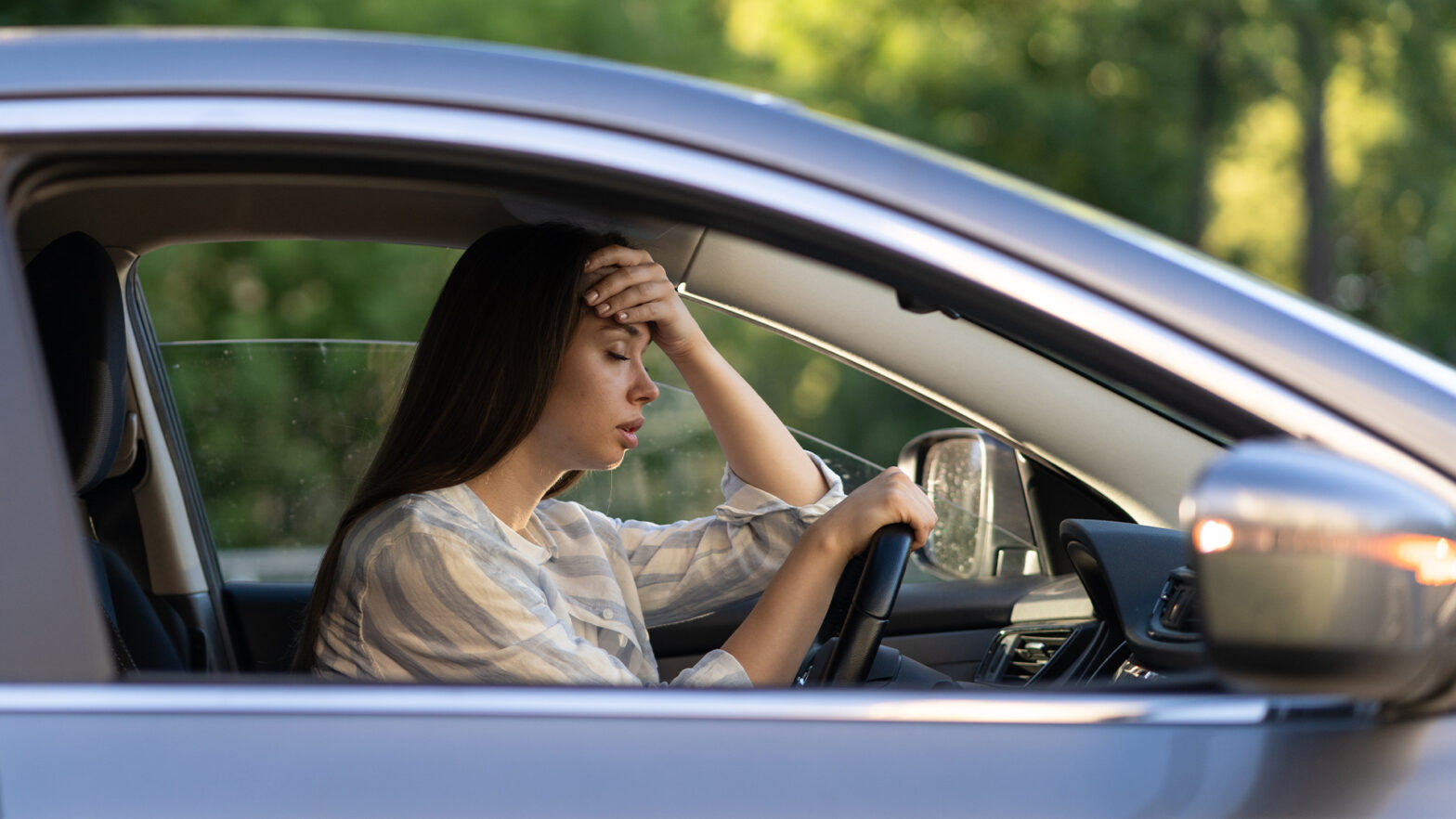
Driving is a skill many of us take for granted. But for some, it’s a real source of anxiety. In fact, a survey by ALA Insurance of 2,000 motorists in the UK found that around 44% of drivers admit they feel stressed by regularly driving.
Whether it’s the thought of merging onto the motorway, the fear of shifting from an automatic to a manual vehicle, or simply the worry of getting behind the wheel of your used Audi, driving anxieties are common.
Mental health coach Jeremy Schneider added: “Driving is challenging because it highlights the anxieties we feel about not feeling in control. But there are ways we can help ourselves when we feel that way – whether it is driving or in other life situations.”
Anxiety specialist Zoe Clews echoes this idea: “Parking, motorway driving, and driving at night can all be big triggers for nervous drivers simply because they require more focus and are therefore more intense. In all of these situations, which demand a higher level of control and concentration, there is more ‘scope’ in an individual’s mind for things to ‘potentially go wrong’.”
Sam Sheehan, a motoring editor at cinch, the UK’s leading online used car retailer, has teamed up with Zoe and Jeremy to help anxious drivers overcome their fears and be more confident on the road.
Motorway Driving
A lot of drivers find motorways intimidating – it’s especially common in new drivers who don’t have much experience on them. Higher speeds, multiple lanes, and merging into traffic are some of the things people find stressful.
Sam Sheehan recommends easing into it and taking your time to get used to motorways: “There’s no rush to get comfortable driving on the motorway. It’s key to take your time and start with short trips when the roads are quiet, if possible. Don’t be afraid to ask a more experienced or confident driver to come along with you for support either.
“Before setting out, plan your route to decide where you’ll get on and off the motorway and brush up on lane discipline. When you get onto the motorway, stick to the left lane until you feel confident enough to overtake in the middle and right lanes.”
Going from Automatic to Manual
Research by Direct Line Group shows the number of people taking driving tests in automatic cars rose to 42% of all driving tests in 2020/21.
Sam Sheehan suggested this trend could be due to, “drivers feeling intimidated by driving manual” and that, “maybe tech is making us less likely to master or refresh manual driving skills.”
Also, 2.2 million people who learnt to drive in an automatic car are aged under 35, and younger drivers (18-24 years old) report the highest stress levels at 59%. That suggests young people could be so worried about driving a manual car that they avoid it completely and won’t have the chance to get over it unless they pass a manual driving test.
It can be the same for drivers who took their tests in a manual car but have been driving an automatic for some time, too. Relearning the skill may also make them feel apprehensive.
Sam Sheehan has offered some advice to those looking to make the switch and ease their anxieties:
“If you have a manual license, don’t be afraid to take your time to get back into using gears after driving an automatic.
“Start by practising during quieter times in a safe, open space such as an empty car park. This environment allows you to focus on the mechanics of driving a manual without the stress of traffic, while you rebuild your muscle memory.
“Practice regularly and be patient with yourself. It’s normal to stall or make mistakes initially, but with consistent practice, your confidence and skills will return.”
General Driving Anxiety
General driving anxiety can stem from a few things, including past negative experiences, fear of accidents, or lack of confidence. Overcoming these challenges takes a combination of mental and practical strategies.
The mental approach
Anxiety specialist Zoe Clews explains that the most common causes of driving anxiety include being involved in or witnessing a car accident. “The subconscious mind is your inner protector and doesn’t understand time. When you experience shock or trauma, it sets up a protective defence mechanism – anxiety – to keep you safe, even if the incident occurred decades ago.
“The individual may understandably start avoiding specific roads, like motorways, or driving altogether, as human behaviour tends to avoid perceived painful situations. However, the issue is that anxiety thrives on avoidance, causing the fear to grow.”
She also recommends self-talk as a way of working through this anxiety: “Our ability to bounce back from adrenaline spikes, catastrophising thoughts, panic attacks, and anxious moments comes from our self-talk.
“When we get anxious, we tend to judge ourselves harshly, often telling ourselves we are foolish for panicking over certain things. But the more we judge ourselves, the more anxious we become, creating a vicious cycle of anxiety and self-criticism.
“Learning to talk to ourselves in a kind, reassuring, and encouraging way when facing driving anxiety may feel strange and indulgent, but it is the foundation to overcoming your fears.”
Physical techniques
According to mental health coach Jeremy Schneider, one of the best ways to combat the physiological effects of anxiety is by breathing.
“We take about 20,000 breaths per day without ever thinking about it. But if we take a big breath in and then exhale longer than we inhaled, we will slow down our nervous system.
“For instance, breathe in for 5 seconds and out for 7 seconds. Do that for ten breaths and see how you feel and then repeat.”
Driving anxieties, whether specific or general, are more common than we might think. The key to overcoming these anxieties lies in preparation, practice, and patience.
Remember, it’s perfectly normal to feel nervous about driving, but with the right strategies and support, you can become more confident and relaxed.


















